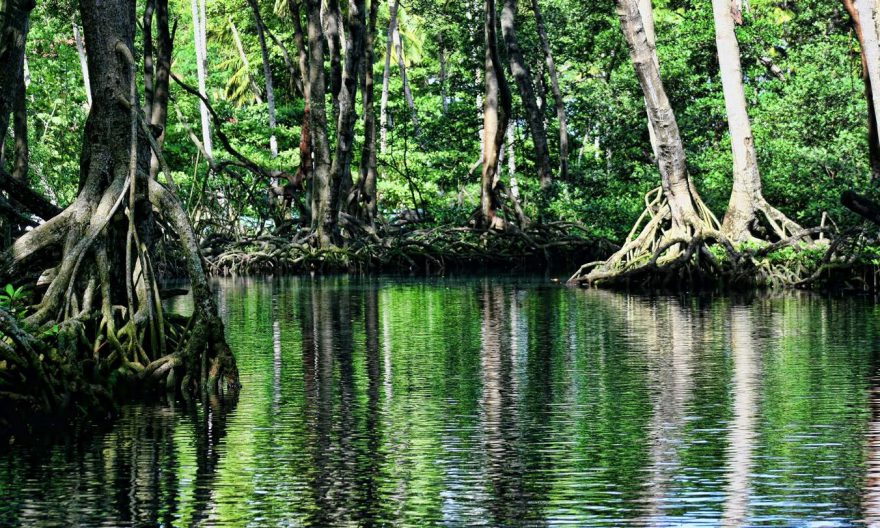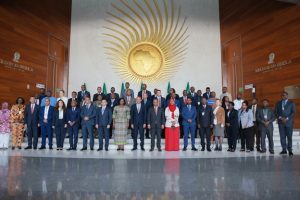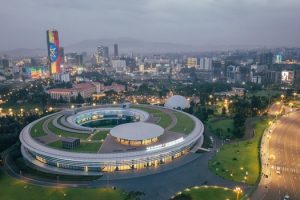
DNA is the blueprint of life. All the information that an organism needs to survive, reproduce, adapt to environments or survive a disease is in its DNA.
That’s why genomics – studying DNA and genes – is so important. It involves sequencing species’ parts or the entire genome. This is a scientific method to determine an organism’s DNA by breaking these components into fragments and determining their compositions or sequences. The fragments are then aligned and merged to reconstruct the original sequence.
This arms researchers with critical information. They can learn how to treat or prevent diseases, for instance, or how to breed crops and animals with better traits. Those traits might help species adapt better to the environment (more crucial than ever in the era of climate change) or improve their yields, making them more profitable.
But there’s a large gap in genomics research: barely anything is known about the genomics of African species. This is despite the continent’s rich biological diversity. It has plants and animals that aren’t found anywhere else in the world.
These species have provided people across Africa with food, medicines and a way of life for centuries. For example, people in the continent’s dry regions have long kept indigenous cattle, sheep and goats. The animals are a source of food and income in places that cannot support crop production.
African species have been neglected by the global genomic community. Scientists tend to focus on their own regions or countries. Africa’s own genome sequencing and bioinformatics capacity is limited, so the continent’s scientists haven’t been able to do the necessary work. To date only a fraction of species endemic or indigenous to the continent have been properly sequenced and adequately characterised using other scientific methods.
The African BioGenome Project (AfricaBP) wants to change this. It’s a pan-African project that seeks to sequence Africa’s endemic and indigenous plants and animals. That’s an estimated 105,000 species. We are three of the more than 109 African scientists involved in the project and recently published a position paper in Nature outlining the consortium’s vision for the next 10 years.
The sequencing of the human genome, a US-led effort, shows how many direct and indirect benefits there are to this kind of work. The Human Genome Project led to advancements in genomics and precision medicine. It spurred new innovations in equipment, technologies and infrastructure that generated US$265 billion annually for the US economy by 2019.
AfricaBP also aims to attract more students and early career researchers to genomics and related fields – and to encourage them to stay on the continent so that African countries benefit from their skills. This process could be achieved by working with African institutions to provide permanent positions in genomics and bioinformatics.
A crucial investment
Genome sequencing is a complex process. Species must be sampled and collected from specific locations; processed and quality controlled; sequenced and then carefully studied.
AfricaBP works closely with its scientific communities and partners to select species for sequencing. We will be sending out several calls to scientists across Africa to nominate species. Some have already been selected: these include the Checkered Elephant Shrew (Rhynchocyon cirnei) in Central and South-East Africa and the red mangrove tree (Rhizophora mangle) in West Africa).
DNA is the blueprint of life. All the information that an organism needs to survive, reproduce, adapt to environments or survive a disease is in its DNA.
That’s why genomics – studying DNA and genes – is so important. It involves sequencing species’ parts or the entire genome. This is a scientific method to determine an organism’s DNA by breaking these components into fragments and determining their compositions or sequences. The fragments are then aligned and merged to reconstruct the original sequence.
This arms researchers with critical information. They can learn how to treat or prevent diseases, for instance, or how to breed crops and animals with better traits. Those traits might help species adapt better to the environment (more crucial than ever in the era of climate change) or improve their yields, making them more profitable.
But there’s a large gap in genomics research: barely anything is known about the genomics of African species. This is despite the continent’s rich biological diversity. It has plants and animals that aren’t found anywhere else in the world.
Get news that’s free, independent and based on evidence.
These species have provided people across Africa with food, medicines and a way of life for centuries. For example, people in the continent’s dry regions have long kept indigenous cattle, sheep and goats. The animals are a source of food and income in places that cannot support crop production.
African species have been neglected by the global genomic community. Scientists tend to focus on their own regions or countries. Africa’s own genome sequencing and bioinformatics capacity is limited, so the continent’s scientists haven’t been able to do the necessary work. To date only a fraction of species endemic or indigenous to the continent have been properly sequenced and adequately characterised using other scientific methods.
The African BioGenome Project (AfricaBP) wants to change this. It’s a pan-African project that seeks to sequence Africa’s endemic and indigenous plants and animals. That’s an estimated 105,000 species. We are three of the more than 109 African scientists involved in the project and recently published a position paper in Nature outlining the consortium’s vision for the next 10 years.
The sequencing of the human genome, a US-led effort, shows how many direct and indirect benefits there are to this kind of work. The Human Genome Project led to advancements in genomics and precision medicine. It spurred new innovations in equipment, technologies and infrastructure that generated US$265 billion annually for the US economy by 2019.
AfricaBP also aims to attract more students and early career researchers to genomics and related fields – and to encourage them to stay on the continent so that African countries benefit from their skills. This process could be achieved by working with African institutions to provide permanent positions in genomics and bioinformatics.
A crucial investment
Genome sequencing is a complex process. Species must be sampled and collected from specific locations; processed and quality controlled; sequenced and then carefully studied.
AfricaBP works closely with its scientific communities and partners to select species for sequencing. We will be sending out several calls to scientists across Africa to nominate species. Some have already been selected: these include the Checkered Elephant Shrew (Rhynchocyon cirnei) in Central and South-East Africa and the red mangrove tree (Rhizophora mangle) in West Africa).
Researchers are asked to explain the species’ scientific, cultural and economic significance. We want the species we sequence to be useful to a particular community or communities, perhaps by providing food or medicine, or to be culturally significant. They could also be endangered, making their documentation through sequencing efforts even more urgent.
Some may raise their eyebrows at the project’s projected cost: about US$1 billion over the next 10 years to complete the planned sequencing, develop infrastructure and train more scientists. It might seem like an unjustified expense given Africa’s urgent needs, such as food security.
But genomics can help to address some of these needs. Providing nutritious food to an ever increasing human population will be made possible by new technologies that reduce breeding times and select for the traits that make crops hardy, adaptable and nutritious. For example, the International Center for Agricultural Research in the Dry Areas in Rabat, Morocco, screened 5,780 wild crops, like sugar beet and pea; it found that many of these can cope with major desertification. These crops’ genes could be transferred to related crops to help deal with arid conditions.
This sort of science has also been shown to drive economic growth through related fields such as biopharmaceuticals, diagnostics, new medical devices and through providing health care in new and innovative ways. The human genetics and genomics sector in the US has been found to support more than 850,000 jobs and contributed US$265 billion to the US economy.
Retaining African talent
African science stands to benefit from this initiative. There are already 109 African researchers involved in AfricaBP; most of them (87) are based at 22 institutions across the continent, in countries including Morocco, Nigeria, Cameroon, Kenya, and South Africa.
Developing better genomic infrastructure in African countries is a way to keep researchers on the continent, harnessing their skills for their own countries and regions. It is also crucial to get more African scientists involved in initiating home-grown research projects that focus on national priorities.
In the next decade we hope that AfricaBP will be part of efforts to prioritise genomic sequencing – and help reap its benefits for the continent.
(Source: The Conversation)
THE ETHIOPIAN HERALD FRIDAY 26 AUGUST 2022




